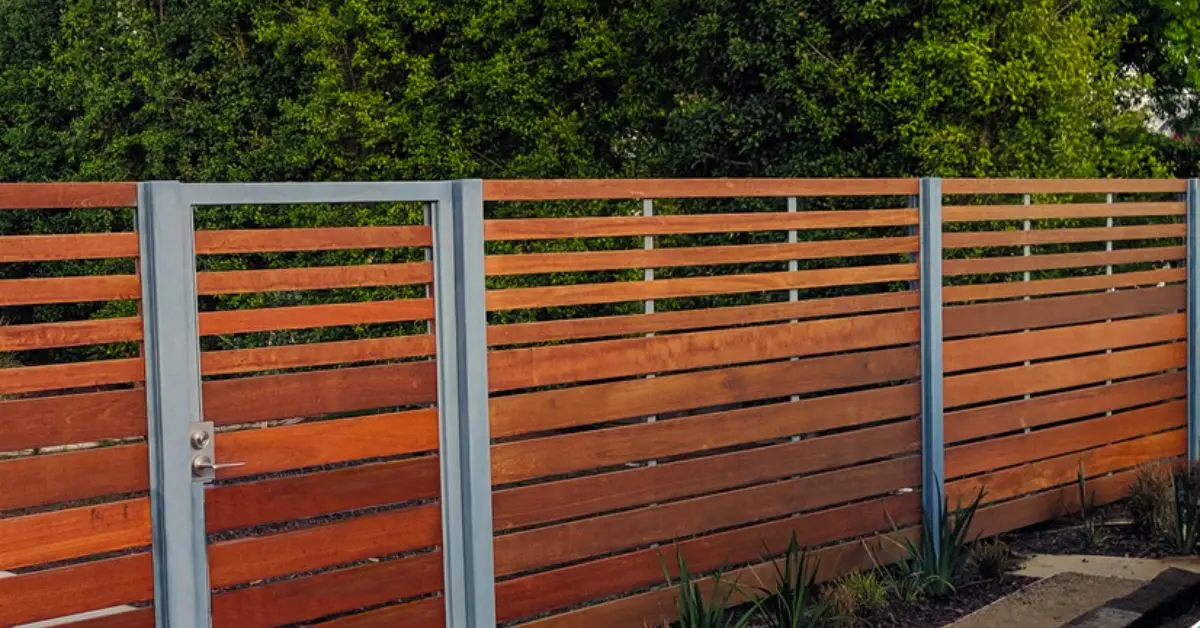How to Avoid Fence Disputes with Neighbors Over Property Boundaries
You never really think about where your property ends—until something like a new fence turns it into a problem.
I’ve seen neighbor relationships fall apart over just a few inches of land. One person puts up a fence, the other thinks it’s too far over the line, and suddenly what started as a simple upgrade becomes a legal mess or years of cold stares across the driveway.
The truth is, most fence disputes aren’t about the fence. They’re about communication, assumptions, and unclear boundaries—literally and emotionally.
This guide will walk you through 9 clear, respectful, and legally sound ways to avoid those headaches. Whether you’re planning to build a fence, replace one, or just want to make sure your current setup won’t spark trouble, you’re in the right place.
And if you’ve already had a tense conversation with your neighbor? Don’t worry—we’ll cover ways to handle that too.
Let’s talk about how to keep your fence strong—and your neighborly peace even stronger.
What kind of boundary issues have you noticed in your neighborhood lately?
1. Understand Your Property Boundary Accurately
Before you even think about fence materials or colors, let’s talk about something most people skip: where your property actually ends. It might sound obvious, but I’ve seen neighbors go to court over a fence built just six inches too far in either direction.
1.1 Check your property deed, plat, and title records
That old myth that “the left side is always yours”? Not true. The only real authority here is your paperwork.
Your property deed or land survey will usually show boundary lines clearly. If you’re in the UK, you might see a “T” symbol on the plan—that tells you who’s responsible for maintaining which side of the fence. In the U.S., similar info shows up in plat maps or title reports.
Don’t assume. Confirm. It’s the kind of small detail that many overlook—just like these things every smart homebuyer inspects before finalizing a property deal.
Texas Real Estate Research Center explains this in detail—especially for people buying or selling a home near a shared fence.
Why this matters: If you build on your neighbor’s land (even by accident), they can legally force you to remove it. That’s time, money, and reputation lost.
1.2 Hire a boundary surveyor if you’re unsure
If your records are old, unclear, or conflicting with what your neighbor thinks, hire a professional boundary surveyor. It’s not cheap—expect around $500 to $2,000—but it’s worth every cent if it avoids a $10,000 legal battle.
Better Homes & Gardens gives a helpful breakdown of when surveys are needed and what they cover.
A proper survey gives you physical, defensible proof of where your fence can go—and it also gives your neighbor less room to argue.
You’re not just building a fence; you’re protecting your legal rights with concrete evidence. Once you’ve confirmed your boundary, here’s how to choose the perfect fence that balances style, durability, and neighborhood appeal.
2. Follow Local Regulations and Fence Etiquette
So you’ve figured out where your property ends. Great. Now comes the part most people underestimate: local rules and good manners.

A lot of fence disputes don’t happen because someone is mean or petty—they happen because someone didn’t check the law or thought, “It’s my yard, I can do what I want.”
That thinking gets expensive, fast.
2.1 Know the zoning laws, HOA rules, and permit requirements
Before a single post goes in the ground, check with your local city or county office. Some areas have height restrictions. Others require you to stay a certain distance back from the sidewalk or property line. And if you’re part of an HOA, you might need design approval too.
Here’s a common one: in many cities, any fence over 2 meters (about 6.5 feet) needs a building permit. Skip that step, and the city could order you to tear the whole thing down.
And let’s be honest—no one wants to waste money like that.
Knowing the rules protects your investment and keeps you out of trouble. A little research now can save you a lot of stress later.
2.2 Don’t build a “spite fence”
If you’re putting up a fence just to block a view, annoy your neighbor, or “send a message”—stop right there.
Courts have ruled against these kinds of fences for decades. Even if it’s technically on your land, if it’s clearly built to harass or punish someone, you could be ordered to take it down. And you’ll be labeled that neighbor.
Besides, living with tension next door isn’t worth the power trip.
Respect goes a long way. A fence should give you privacy and peace—not become a silent war zone.
3. Start with Open, Proactive Communication
Here’s a simple rule that could prevent 90% of fence drama: Talk to your neighbor first. I mean really talk—before any decisions are made, before any materials are bought, and definitely before construction starts.
It doesn’t have to be a formal sit-down. Just walk over, explain what you’re planning, and ask for their thoughts. Share your timeline, the type of fence you’re considering, and whether you’re hoping to split the cost. Keep it light, but clear.
Most people just want to be included. And when they feel respected, they’re way more likely to cooperate—or at least not object later.
Southern Living makes a great point here: even when you don’t legally need their permission, asking first is the neighborly thing to do.
Clear communication now builds trust, avoids misinterpretation, and often leads to shared solutions that benefit both sides.
4. Agree on Cost-Sharing from the Start
Money has a way of making fence projects awkward—fast.

If the fence is on the boundary line, there’s often an expectation that both parties will share the cost. But what’s “fair” can mean very different things to different people. One neighbor might be thinking budget panels, while the other wants custom cedar with a decorative top rail.
So set clear expectations from day one. Define what counts as an “adequate fence.” Get quotes. Decide on a budget. And most importantly—put it in writing, even if it’s just a simple letter or email both of you agree to.
As RNZ notes, even informal agreements can hold weight in boundary disputes and show you acted reasonably. Clarifying money details upfront protects your wallet, your rights, and your relationship with the neighbor.
5. Formal Notice if Informal Agreement Fails
Sometimes, no matter how politely you ask or how clearly you explain things, your neighbor just won’t budge. When that happens, you may need to take a more official route.
5.1 Sending a “fencing notice” (if needed)
In many regions—especially places like New Zealand or parts of the U.S.—there’s a formal process for giving notice when you want to build or replace a shared fence. This is typically called a fencing notice.
It’s a written document that includes the proposed design, materials, estimated cost, who’s paying for what, and when the work will happen. It also gives your neighbor a chance to object—usually within 21 to 30 days.
If they don’t respond in time, you can often proceed. If they do object, it opens the door for formal negotiation or mediation.
A fencing notice isn’t about being aggressive—it’s about protecting your legal rights and making sure there’s a paper trail if things go sideways.
5.2 Receiving & responding to a cross-notice
If your neighbor doesn’t agree with your proposal, they can respond with what’s called a cross-notice. This might include a different design, budget concerns, or a counter-offer on how to split costs.
Even if you disagree, you’re now in a structured process—which is way better than a shouting match over the fence line.
Written objections keep things formal, respectful, and less likely to escalate into a legal fight.
6. Use Neutral Conflict Resolution If Needed
If even the formal notice process doesn’t help, don’t rush into court. There are simpler, less confrontational ways to resolve fence disputes that can save you both money and long-term resentment.
Mediation and arbitration are common first steps. These involve a neutral third party helping you and your neighbor come to an agreement. In some cases, local tribunals or small claims courts are also an option—and they’re far less intense than full-blown litigation.
The key here is preserving the relationship as much as possible. Because no matter how this plays out, you still have to live next to each other.
Neutral conflict resolution keeps things civil, saves legal costs, and often gets you to a better outcome faster than court ever could.
7. Prevent Future Disputes with Co‑ownership Standards
Once a fence is up, it’s easy to forget about it—until something breaks, leans, or starts to look rough.

That’s why it’s smart to treat the fence like a shared project from day one. When rebuilding or replacing a boundary fence, sit down with your neighbor and preview the design, color, and materials together. It doesn’t need to be formal—just a shared understanding of what works for both sides.
Also: agree on who handles maintenance. Will you both check it once a year? Split the cost of future repairs? Keep a quick note or email thread that confirms it. That tiny bit of planning now saves you from having the same argument five years later.
Shared expectations = fewer surprises. And fewer surprises = fewer arguments.
8. Special Situations: Emergencies, Tree Encroachment, Damage
Not all fence issues are planned. Sometimes a storm, a falling branch, or a burst of wind changes everything overnight.
8.1 Emergency repairs
If a fence collapses suddenly—say, from a storm or accident—you usually have the right to make emergency repairs without formal notice. That said, you should still inform your neighbor as soon as possible, especially if you’re expecting to split costs later.
Document the damage with photos and receipts. Most reasonable neighbors will understand once they see what happened and how fast you acted.
8.2 Overhanging trees or vegetation damage
This is one of the sneakier causes of fence disputes. Roots growing under the fence. Branches leaning over. A tree falling just slightly the wrong way.
Legally, the owner of the vegetation is typically responsible if it damages a shared fence. But that can get messy fast—especially if there’s no proof.
If damage happens, take clear photos, write a short report, and try to talk through it calmly before escalating.
Most of these problems are easy to solve when caught early—but they turn ugly fast if ignored or handled aggressively.
9. Add Value by Building Goodwill & Long‑Term Harmony
Not every fence decision has to be about avoiding problems. Sometimes, it’s about creating something better—together.
Want to keep the peace long-term? Offer small things that show goodwill: give your neighbor the nicer side of the fence, add a shared planter, or offer to put in a gate that benefits both yards. These aren’t obligations—they’re gestures. But they go further than you think.

Even after the fence is built, keep in touch. Check in once in a while about maintenance, repairs, or concerns. That informal connection is what turns neighbors into allies.
A fence doesn’t have to divide you. It can actually bring a sense of mutual respect—if you build with that in mind.
Final Takeaways
Let’s keep it simple:
- Know your boundaries—literally.
- Talk before you build—don’t let assumptions become arguments.
- Check the rules—permits, height limits, and notices protect everyone.
- Put it in writing—even if it’s just a short email.
- When in doubt, stay respectful—mediation beats legal war.
- And above all, act like someone who plans to live there for a while. Because you probably will.
At the end of the day, fences aren’t just about privacy—they’re about trust. The more care you put into the process, the more peace you’ll have afterward.
Have you ever had a fence-related misunderstanding with a neighbor? How did you handle it—or how do you wish you had? Let’s talk in the comments.
For more tips on smart home upgrades, fence planning, and property solutions, visit Build Like New. Or check out these summer home upgrades that instantly improve your curb appeal—without breaking the bank.
Disclaimer: This article is for informational purposes only and does not constitute legal or professional advice. Property laws, fence regulations, and neighbor rights vary by region. Always consult with a qualified local surveyor, real estate attorney, or relevant authority before starting any construction or boundary-related project. Build Like New is not responsible for any actions taken based on this content.


